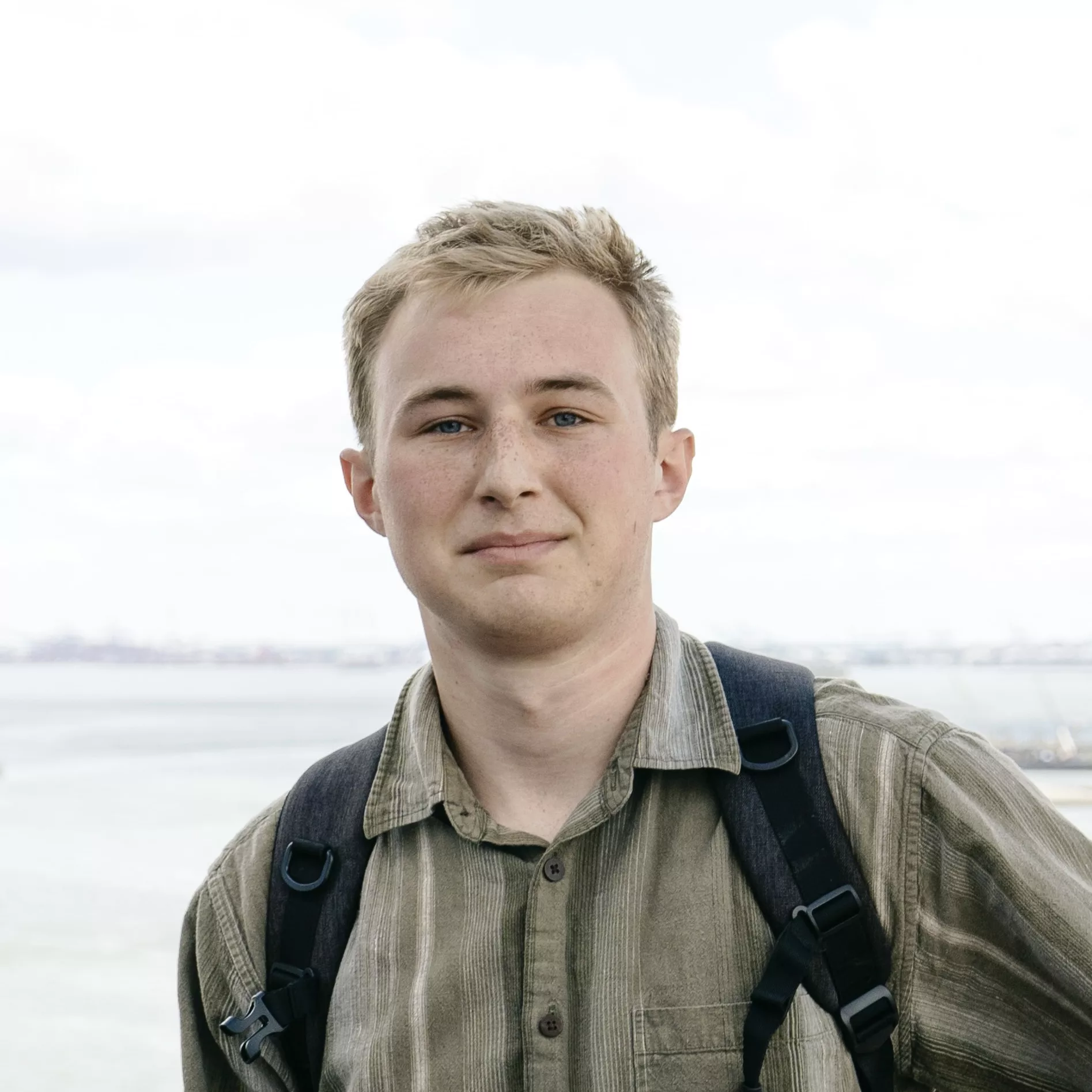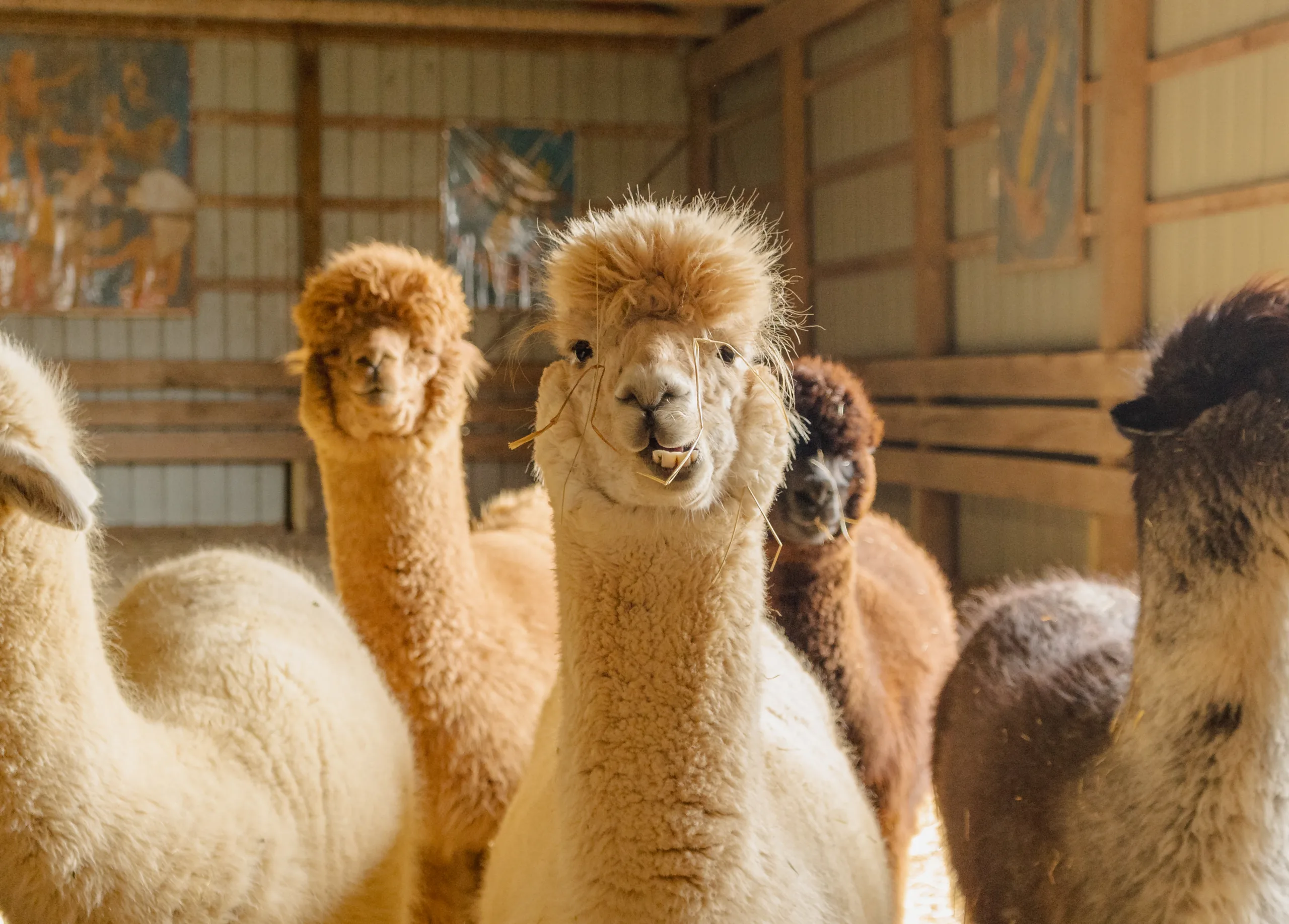From the Andes mountains to the plains of the Hoosier State, one of the country of Peru’s most famous animals has found a home over 3,000 miles away from their South American roots.
Peru, Ind. is home to Circus City Alpacas, a farm started by Andrea and Richard Hammersley. Around 60 years ago, the couple started their farm with ponies and horses. After many years of raising horses and ponies, Andrea said she began looking for smaller animals to raise.
“At some point, I mean we’ve always had stallions, raised babies, broke horses, all of that; that’s what we built the barn for,” Hammersley said. “But when you get to be about 50 or so, you go, ‘It’d probably be good to have something smaller.’”
They bought two young girls and one pregnant female, and grew their herd from there. Today, after 19 years, they have around 33 alpacas at their farm in rural Miami County, with more coming and going constantly. All but one of Hammersley’s alpacas are Huacaya alpacas, which have crimped fiber and 16 natural colors.
“We’re going to have between eight and ten babies born, and I just bought five more. Because they’re kind of like potato chips. You can’t just have one, you know,” she said.

Andrea mainly raises alpaca for their fiber, which can be used similar to wool — spun into yarn and used to make socks, sweaters, hats, and more. However, according to Andrea, there are a few differences between wool and alpaca fiber.
“Well, alpaca fiber does not have lanolin on it, wool fiber does, so it’s not sticky. It’s not stinky, it’s dry, it’s very, very soft, and it’s very, very well-insulated. That’s why we sell tons of socks, because they’re very, very warm,” Hammersley said.
Not all fiber is created equal, though. Alpaca fiber has six grades, which classify it based on the size of the fiber as well as other properties. Hammersley said they consider the length of the fiber, the definition of the crimp, and the fiber density when grading it. Grading experts go through two classes and an apprenticeship before they are certified through the Alpaca Owners Association.

The farm holds events and open houses throughout the year, which allows the public to have hands-on experiences with the animals. She said families, nursing homes, and other groups often visit the farm, and they enjoy getting to know the alpacas firsthand. Hammersley said these hands-on experiences are the only way to truly understand the feeling of the alpacas and their fiber.
“We answer as many questions as we can for people, and we always like for them to get their hands on them, because people really don’t know what they feel like. They’re absolutely magic to touch — their fiber is really, really cool,” Hammersley said.
However, their involvement with the community goes beyond just open houses. Circus City Alpacas is named after the Peru Amateur Circus, which features 10 performances by hundreds of young performers each year. Around 1987, Hammersley said she was a trainer for the bareback act of the Peru Amateur Circus with her horse, Clyde.

Hammersley has also been a key figure in Indiana’s alpaca community for many years — she served as the president of the Indiana Alpaca Owners Association for more than seven years. During her tenure, she helped alpaca owners from across the state establish their own herd, offering support and advice along the way. She said the community is tight-knit and collaborative.
“I mean even at the national show, you know, you’re in there with people from all over the United States. I was next to people in New York that I have bought animals from, and I was next to somebody from Michigan who I visited. You get to know people, and it’s really nice to see their animals and who wins what,” she said.
And while raising alpacas is less physically intensive than horses and ponies, raising any animal is hard work. However, Hammersley says she doesn’t plan on slowing down anytime soon.
“Because that’s what I do. I refuse to act old and quit doing things, and I’m going to do it until I can’t do it anymore. That’s just how I am,” Andrea says.

